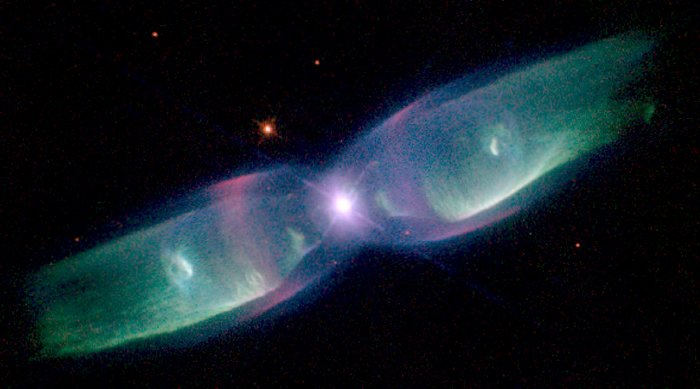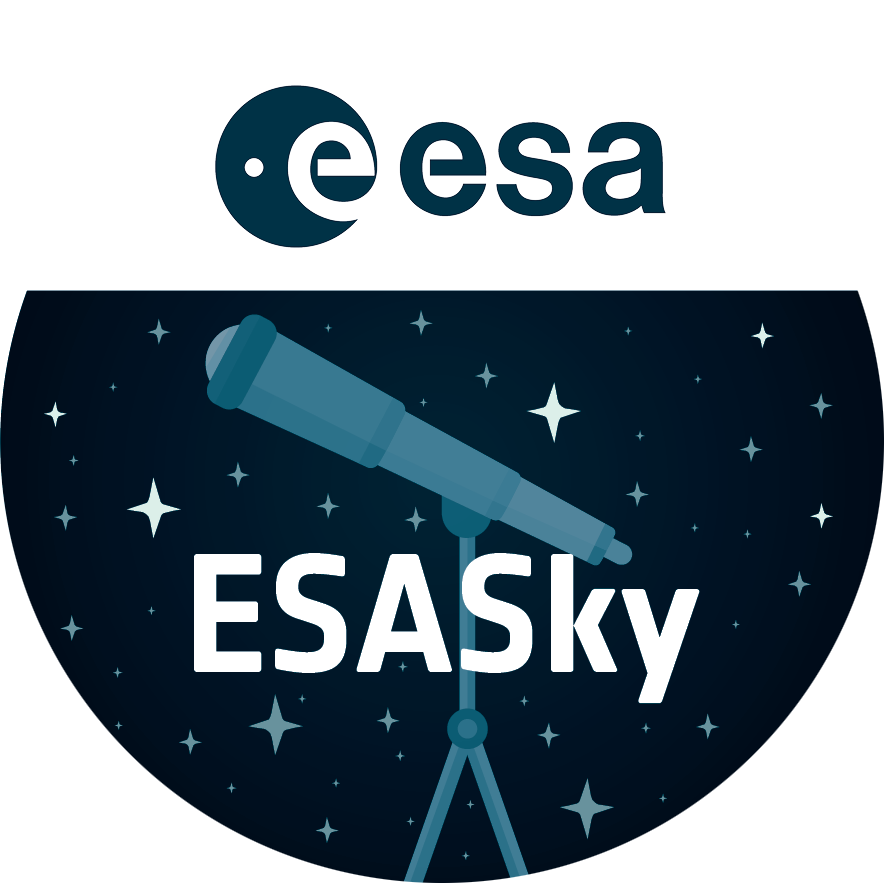Hubble sees supersonic exhaust from nebula
M2-9 is a striking example of a 'butterfly' or a bipolar planetary nebula. Another more revealing name might be the 'Twin Jet Nebula'. If the nebula is sliced across the star, each side of it appears much like a pair of exhausts from jet engines. Indeed, because of the nebula's shape and the measured velocity of the gas, in excess of 200 miles per second (approx. 322 kilometres per second), astronomers believe that the description as a super-super-sonic jet exhaust is quite apt. Ground-based studies have shown that the nebula's size increases with time, suggesting that the stellar outburst that formed the lobes occurred just 1, 200 years ago.
Credit:About the Image
NASA press release
| Id: | opo9738a |
|---|---|
| Type: | Observation |
| Release date: | 17 December 1997, 06:00 |
| Size: | 2769 x 1540 px |
About the Object
| Name: | M2-9, Twin Jet Nebula |
|---|---|
| Type: | Milky Way : Nebula : Type : Jet |
| Distance: | 2000 light years |
| Constellation: | Ophiuchus |
| Category: | Nebulae |
Classic Wallpapers
Coordinates
| Position (RA): | 17 5 37.91 |
|---|---|
| Position (Dec): | -10° 8' 33.17" |
| Field of view: | 0.97 x 0.54 arcminutes |
| Orientation: | North is 113.6° left of vertical |
Colours & filters
| Band | Telescope |
|---|---|
| Optical Oiii |
Hubble Space Telescope
WFPC2 |
| Optical Nii |
Hubble Space Telescope
WFPC2 |
| Optical Oi |
Hubble Space Telescope
WFPC2 |


